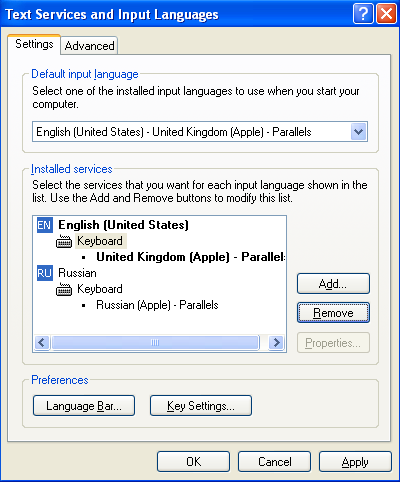I have all kinds of other files on this same shared folder written by various applications under XP (Word, Excel, etc).
As part of using the IBM ClearCase client for Eclipse under XP, when I establish a new view the client needs to create a new folder in which to write files. I have indicated the place for it to do so is a sub-folder of my shared folder. Both the Parallels shared folder and sub-folder I have indicated for the new view have all read/write permissions under OSX (as reported by getInfo).
The ClearCase wizard successfully creates a new folder in the sub-folder, and a file in this new folder. Then at the point it attempts to rename that file to something else, it errors out. The message indicates a permissioning problem (r-x permissions detected).
At this point if I look at the folder it created in the subfolder, it is reported in Windows XP as read-only!
In fact, I cannot change it from read-only within Windows XP.
Why is this the case?
Help!
regards,
Tad
Before buying the sofware.I`m using window xp service pack 2.My question is that can i install WMware Fusion in windows xp so that it will convert into Mac os x system and can i run all mac application in windows xp with the help of WMware Fusion.Is there any other software which can convert windows xp windows 7 or window vista into mac and i. I recently upgraded an almost all Mac shop to FileMaker 12 and most everything has worked great and it is performing faster than 11 did. But one of the clients is using Win XP emluation on a Mac because they need to use QuickBooks and FMP12 is excruciatingly slow for her.
- Before buying the sofware.I`m using window xp service pack 2.My question is that can i install WMware Fusion in windows xp so that it will convert into Mac os x system and can i run all mac application in windows xp with the help of WMware Fusion.Is there any other software which can convert windows xp windows 7 or window vista into mac and i can run all windows (PC) application on mac.Please tell me all this things if yes so i will buy it and please tell the price also.Thank you.
- Parallels Toolbox for Mac and Windows 30+ tools in a lightweight, powerful, all-in-one application for Mac ® and PC. Easy to use and economical—a whole suite of tools for a fraction of the cost of individual apps, packaged in one simple interface.
Symptoms
You have an issue with your USB device:
- It is not getting mounted in a Windows virtual machine
- Virtual machine cannot detect the device
- A device functionality does not work a Virtual Machine
- Other USB devices issues
Resolution


As a first step please read the basic information on how Parallels Desktop works with USB devices you connect to your Mac.
If you still have this issue please follow these steps:

Mac Help
Shut down your virtual machine, quit Parallels Desktop and disconnect your USB device from your Mac.
Connect your USB device to your Mac.
Make sure the device is detected on the Mac side:
- In case of an external storage device it should appear in Finder
In case of other devices (eg. mobile phone):
- Open System Information (Applications > Utilities > System Information), click System Report
Locate your device under the USB section.
Important: your virtual machine will not be able to work with your USB device if your Mac fails to detect it
Start Parallels Desktop, go to Parallels Desktop menu > Preferences > Devices
Check whether the device you would like to connect to your virtual machine is listed under Permanent Assignments list. Use '-' button to delete the device from the list.
Make sure Ask me what to do radiobutton is selected
Note:You may reset the choice for all existing devices
Launch your virtual machine. Once you have Windows up and running go to Devices > External Devices and choose the device you would like to connect to your virtual machine.
The new device will now be installed in Windows.
To check whether the device got installed successfully go to the Device Manager.
If for some reason the device failed to get properly installed try to delete it from the Device manager and then Scan for Hardware Changes.
To learn more about the troubleshooting steps for your specific USB device please refer to the respective device manufacturer.